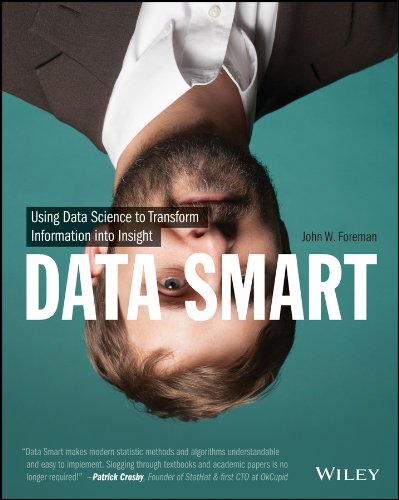Data Smart: Using Data Science to Transform Information into Insight by John W. Foreman Link to heading
Summary Link to heading
“Data Smart: Using Data Science to Transform Information into Insight” is a practical guide that delves into the world of data science with a focus on real-world business applications. Written by John W. Foreman, the book provides a hands-on approach to data analysis, offering readers the chance to follow along with various exercises using popular tools like Excel. Foreman emphasizes the importance of transforming raw data into meaningful insights, demonstrating how data-driven decision-making can significantly benefit businesses. The book covers several core data science techniques, including clustering, optimization, and forecasting, with a step-by-step breakdown of how these can be implemented in everyday business scenarios.
Review Link to heading
Foreman’s “Data Smart” has been well-received for its accessible approach to a complex subject matter. One of its key strengths is its practical focus, making data science concepts approachable for beginners and business professionals who may not have a technical background. The use of Excel as the primary tool for demonstrations is particularly beneficial for readers looking for immediate applicability without needing specialized software. However, some critics might argue that the book could underplay the importance of programming languages and more advanced tools in contemporary data science. Overall, it stands out as a valuable resource for those new to data science and interested in applying it practically within business contexts.
Key Takeaways Link to heading
- Practical Application: The book emphasizes learning through doing, specifically using Excel to perform data science tasks, making the skills immediately applicable in many business environments.
- Data Transformation: It explores how to convert raw data into actionable insights, underscoring the value of using data-derived insights to guide business decisions.
- Accessible Techniques: Key techniques such as clustering and forecasting are broken down into simple steps, allowing readers to grasp fundamental data science methodologies.
- Business Focus: The content is heavily oriented toward solving business problems, highlighting how data science can be used to drive improvements and optimizations in various business operations.
Recommendation Link to heading
“Data Smart” is highly recommended for business professionals, managers, and anyone interested in gaining a practical understanding of data science fundamentals using a tool as common as Excel. It’s a perfect starting point for those who are keen to harness the potential of data analytics to drive decision-making in their organizations without delving immediately into more complex programming languages or statistical tools.
